Pierre C Belarge
Senior Member
- Location
- Westchester County, New York
I was called to a job where the EC was worried about the results of the primary, out in the street was knocked down into the secodary from a tree that fell during a storm we had the other night.
Here is what I found/saw.
1.The service disconnect is outside the building, up against the corner, no visible damage.
2. The subpanel (MLO) is inside, this is where the branch circuits are located. There is damage in the panel.
3. There has been some work that is not too old, which I was told was installed 2 years ago. As you will see from the pictures, there is a varied list of different work as well.
4. There is damage to some of the GFCIs and other loads throughout the building.
5. There is no visible damage at the weatherhead.
6. There is no visible damage at the grounding electrode conductor locations or the grounding electrode locations.
The EC prepared the house for me to megger the circuits. There were a number of circuits that failed the megger tests (.6, .8, .4, 8.9). There were a few that meggered at 189, and 201. The rest were greater than 550.
Here is my question. Take a look at the pictures that follow, and tell me how you think the damaging current flowed into the house. I am asking, not to be a smart guy, but to get some help from the collected wisdom on this site.
Typical load damage, this occurred in several locations -it is not a large house.
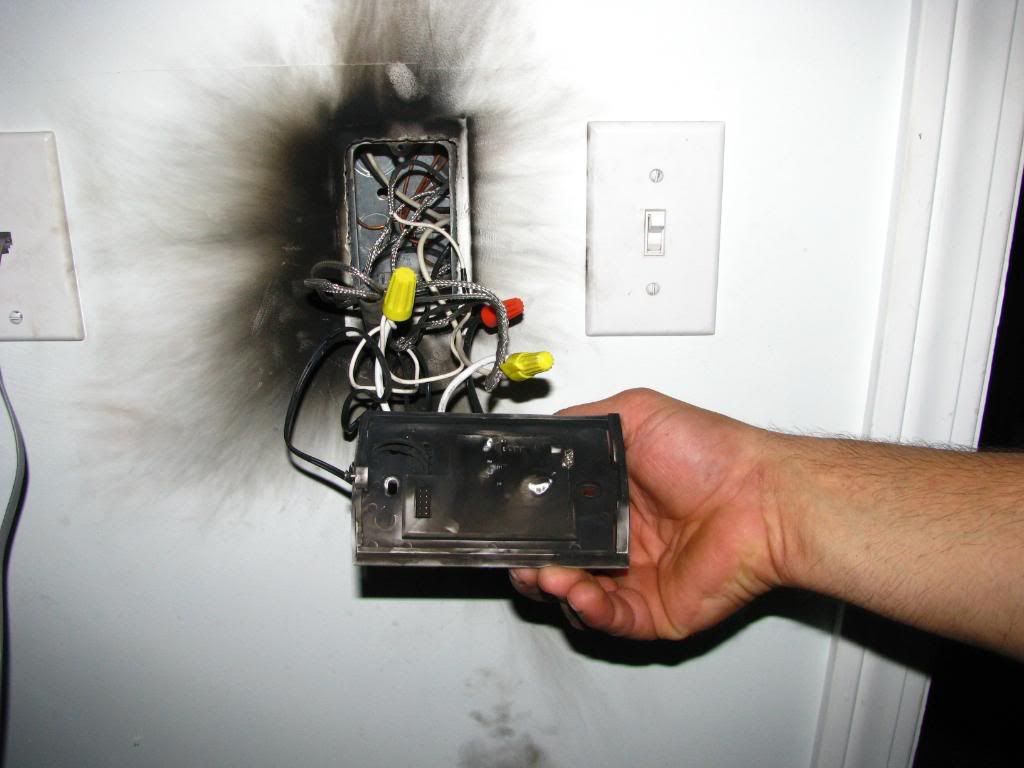
Damage at the subpanel inside (MLO) - notice the different locations inside the enclosure.
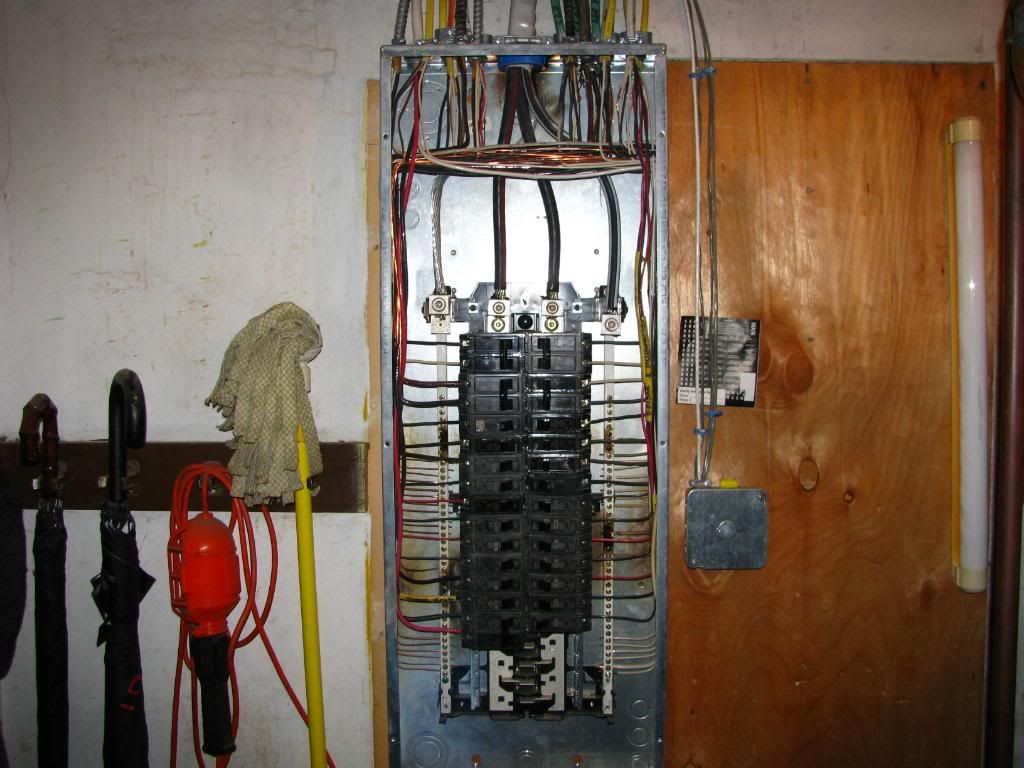
Damage at the subpanel inside (MLO)
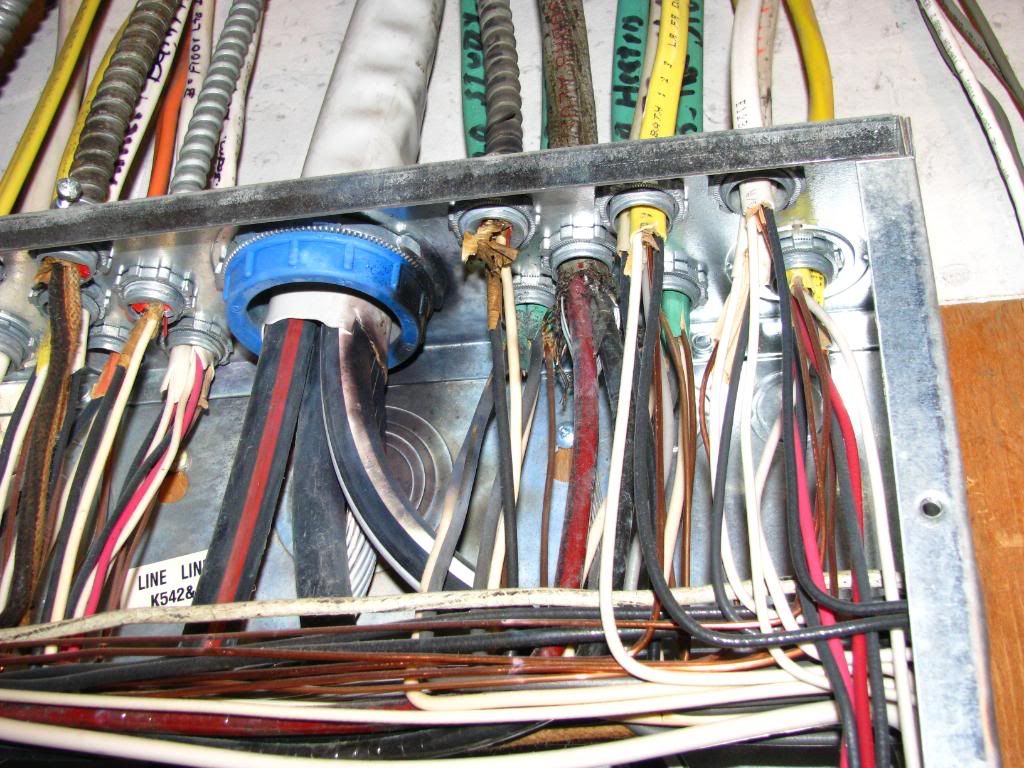
A closer view of the damage to the Equipment Ground Bar. - notice the damage at the EGC bar and directly across to the unground bus.
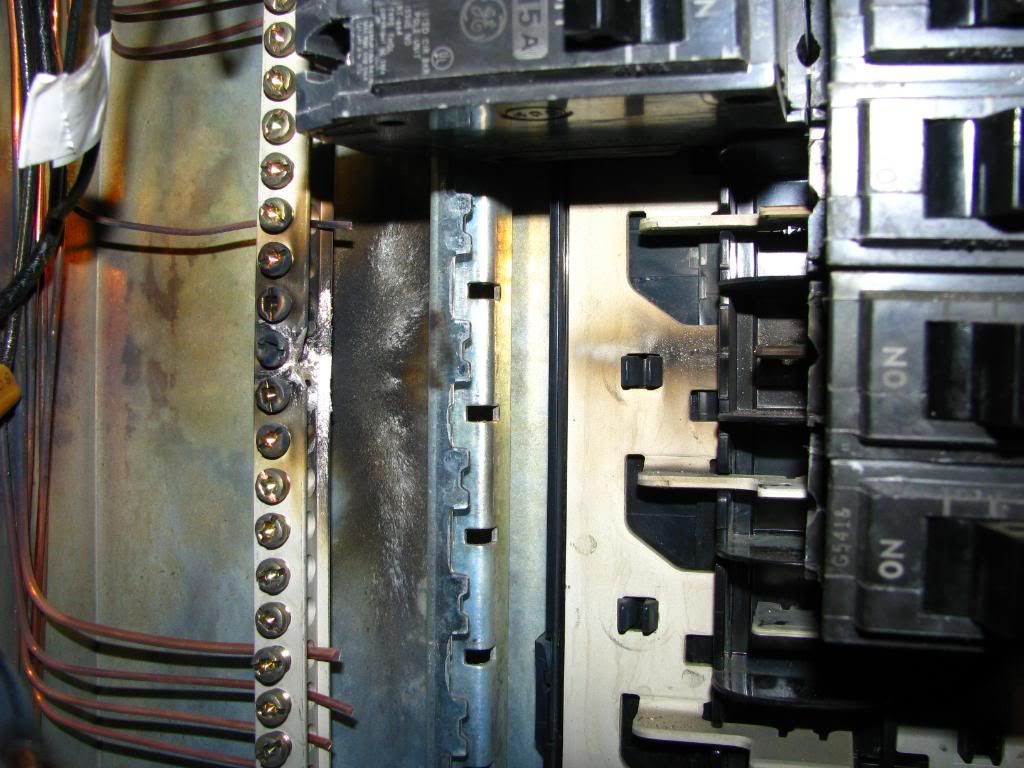
The breakers that were plugged in at the damaged location. Notice the breakers are damaged as well as the ungrounded bus and the Equipment Ground Bar. All in the same location; check the previous picture of the whole panel.
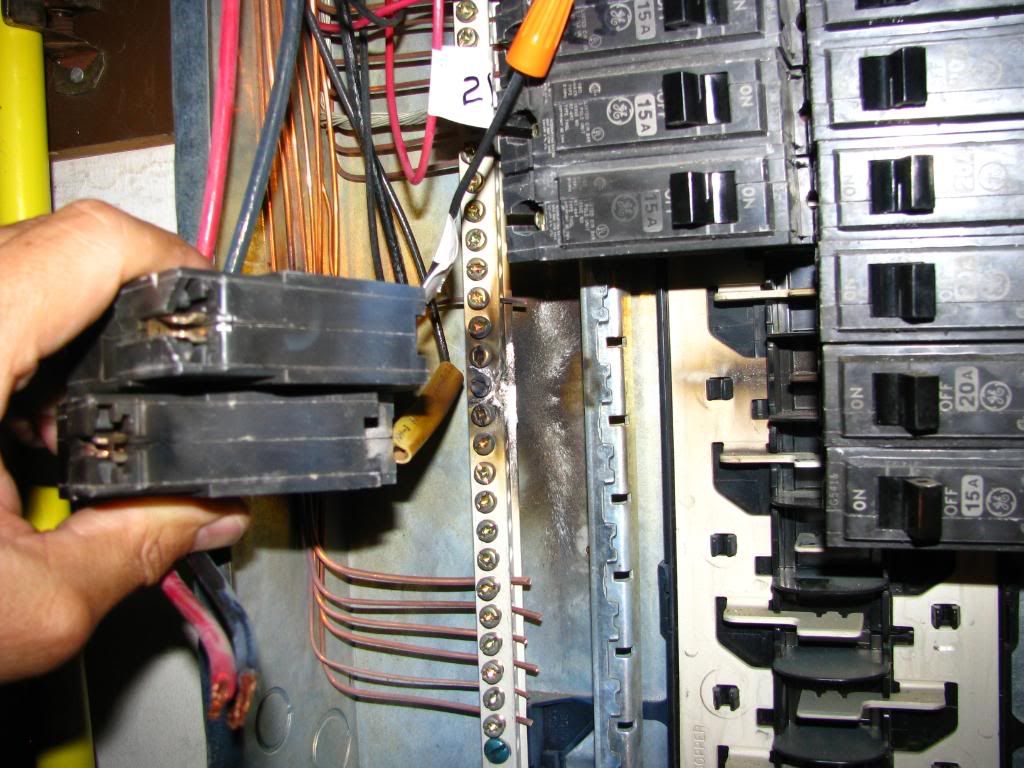
Here is what I found/saw.
1.The service disconnect is outside the building, up against the corner, no visible damage.
2. The subpanel (MLO) is inside, this is where the branch circuits are located. There is damage in the panel.
3. There has been some work that is not too old, which I was told was installed 2 years ago. As you will see from the pictures, there is a varied list of different work as well.
4. There is damage to some of the GFCIs and other loads throughout the building.
5. There is no visible damage at the weatherhead.
6. There is no visible damage at the grounding electrode conductor locations or the grounding electrode locations.
The EC prepared the house for me to megger the circuits. There were a number of circuits that failed the megger tests (.6, .8, .4, 8.9). There were a few that meggered at 189, and 201. The rest were greater than 550.
Here is my question. Take a look at the pictures that follow, and tell me how you think the damaging current flowed into the house. I am asking, not to be a smart guy, but to get some help from the collected wisdom on this site.
Typical load damage, this occurred in several locations -it is not a large house.

Damage at the subpanel inside (MLO) - notice the different locations inside the enclosure.

Damage at the subpanel inside (MLO)

A closer view of the damage to the Equipment Ground Bar. - notice the damage at the EGC bar and directly across to the unground bus.

The breakers that were plugged in at the damaged location. Notice the breakers are damaged as well as the ungrounded bus and the Equipment Ground Bar. All in the same location; check the previous picture of the whole panel.


